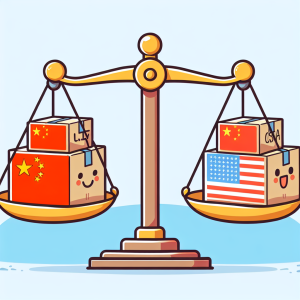As the global economy grapples with the ramifications of U.S. tariffs, Singapore has taken a significant step by easing its monetary policy. This move comes amid concerns that the ongoing trade tensions and tariff implementations are impacting growth rates across various sectors, including technology and manufacturing. The Monetary Authority of Singapore (MAS) announced a reduction in the nominal effective exchange rate policy band, aiming to stimulate economic activity and counteract the pressures stemming from external shocks.
The decision to ease monetary policy reflects a broader trend observed in many economies facing similar challenges. Recent analyses indicate that an expansionary monetary policy is often the optimal response to tariffs, which can exert inflationary pressures beyond their immediate effects. In Singapore, where the economy is heavily reliant on trade, the implications of U.S. tariffs have been particularly pronounced, affecting both consumer goods and intermediate inputs crucial for local production.
In light of these developments, Singapore’s central bank aims to strike a balance between supporting growth and managing inflation. The MAS’s move aligns with insights from global economic research, which suggests that central banks should adopt a more accommodative stance in response to external pressures. The easing of monetary policy is intended to foster a more favorable environment for businesses, particularly in the tech sector, which has been a key driver of Singapore’s economic growth.
Economic Indicators and Future Outlook
Current economic indicators reveal a mixed picture for Singapore. While the labor market remains robust, with low unemployment rates, concerns over inflation persist. The MAS has acknowledged that inflationary pressures could rise, necessitating careful management of monetary policy to avoid destabilizing effects. By easing monetary policy, the MAS hopes to stimulate demand and mitigate the adverse impacts of tariffs on economic growth.
Furthermore, the MAS’s decision comes at a time when global economic conditions are evolving rapidly. The Federal Reserve in the U.S. has been navigating a complex landscape, balancing the risks of overheating the economy with the need to support growth. As the Fed gradually raises interest rates from crisis-era lows, Singapore’s approach may serve as a counterbalance, reflecting a commitment to sustaining growth while managing inflation expectations.
Conclusion
In summary, Singapore’s decision to ease monetary policy in response to U.S. tariffs underscores the interconnectedness of global economies. As trade tensions continue to shape economic landscapes, Singapore aims to maintain its growth trajectory through strategic monetary policy adjustments. The MAS’s actions reflect a proactive approach to navigating external challenges, ensuring that the economy remains resilient in the face of uncertainty.





